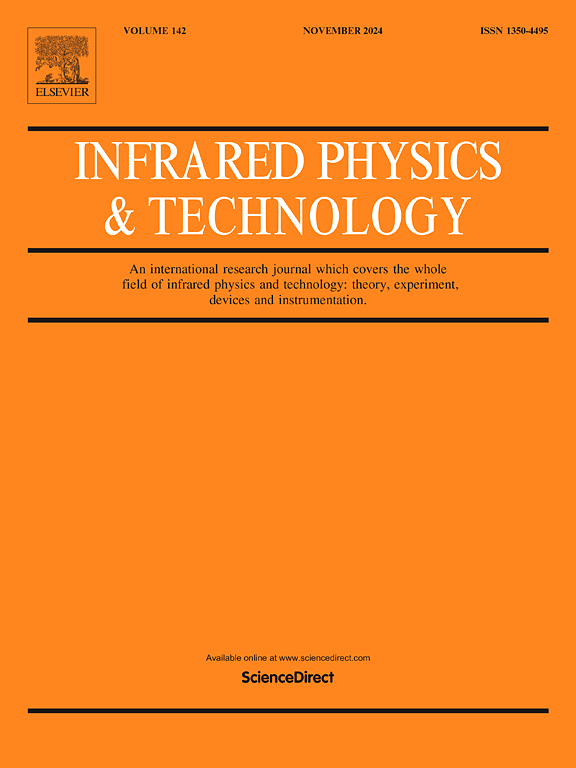IR-DETR: An efficient detection transformer with multi-layer feature fusion for infrared small targets
IF 3.1
3区 物理与天体物理
Q2 INSTRUMENTS & INSTRUMENTATION
引用次数: 0
Abstract
Automatic target recognition is critical in infrared imaging guidance. Detecting small targets is challenging due to poorly defined silhouettes, low signal-to-noise ratio (SNR) and complex backgrounds. Traditional methods and deep learning approaches often struggle with SNR, target size, and insufficient feature extraction. To address these issues, we propose the IR-DETR network family based on DETR. Specifically, we design a multilayer efficient backbone (MEB) for efficient feature extraction of infrared small targets using a simple and efficient network structure. We then fuse local and global spatial features through the local window attention-based intrascale feature interaction (LWAIFI). Our proposed TripleRepC3 (TRC3) expands the model’s receptive field, which improves the detection accuracy of infrared targets while also reducing the model’s overall size. Additionally, we introduce the Adaptive Max-Sigmoid activation function to address the shortcomings of previous activation functions in small target detection. Finally, by incorporating the Normalized Wasserstein Distance (NWD) loss function, we further improve the detection performance of IR-DETR for small infrared targets. Compared to SOTA models on ATR dataset, NUDT-SIRST dataset and IRSTD-1k dataset, the IR-DETR network family achieved the best performance. The code will be released at https://github.com/Eason215xB/IR-DETR.
IR-DETR:一种高效的红外小目标多层特征融合检测变压器
自动目标识别是红外成像制导的关键。由于轮廓不清晰、信噪比低和背景复杂,小目标的检测具有挑战性。传统的方法和深度学习方法经常受到信噪比、目标大小和特征提取不足的困扰。为了解决这些问题,我们提出了基于DETR的IR-DETR网络家族。具体来说,我们设计了一种多层高效主干网(MEB),利用简单高效的网络结构实现红外小目标的高效特征提取。然后,我们通过基于局部窗口注意力的尺度内特征交互(LWAIFI)融合局部和全局空间特征。我们提出的TripleRepC3 (TRC3)扩展了模型的接受野,提高了红外目标的检测精度,同时减小了模型的整体尺寸。此外,我们引入了自适应Max-Sigmoid激活函数,以解决以往激活函数在小目标检测中的不足。最后,通过加入归一化Wasserstein距离(NWD)损失函数,进一步提高IR-DETR对红外小目标的检测性能。与ATR数据集、ndt - sirst数据集和IRSTD-1k数据集上的SOTA模型相比,IR-DETR网络家族取得了最好的性能。代码将在https://github.com/Eason215xB/IR-DETR上发布。
本文章由计算机程序翻译,如有差异,请以英文原文为准。
求助全文
约1分钟内获得全文
求助全文
来源期刊
CiteScore
5.70
自引率
12.10%
发文量
400
审稿时长
67 days
期刊介绍:
The Journal covers the entire field of infrared physics and technology: theory, experiment, application, devices and instrumentation. Infrared'' is defined as covering the near, mid and far infrared (terahertz) regions from 0.75um (750nm) to 1mm (300GHz.) Submissions in the 300GHz to 100GHz region may be accepted at the editors discretion if their content is relevant to shorter wavelengths. Submissions must be primarily concerned with and directly relevant to this spectral region.
Its core topics can be summarized as the generation, propagation and detection, of infrared radiation; the associated optics, materials and devices; and its use in all fields of science, industry, engineering and medicine.
Infrared techniques occur in many different fields, notably spectroscopy and interferometry; material characterization and processing; atmospheric physics, astronomy and space research. Scientific aspects include lasers, quantum optics, quantum electronics, image processing and semiconductor physics. Some important applications are medical diagnostics and treatment, industrial inspection and environmental monitoring.

 求助内容:
求助内容: 应助结果提醒方式:
应助结果提醒方式:


